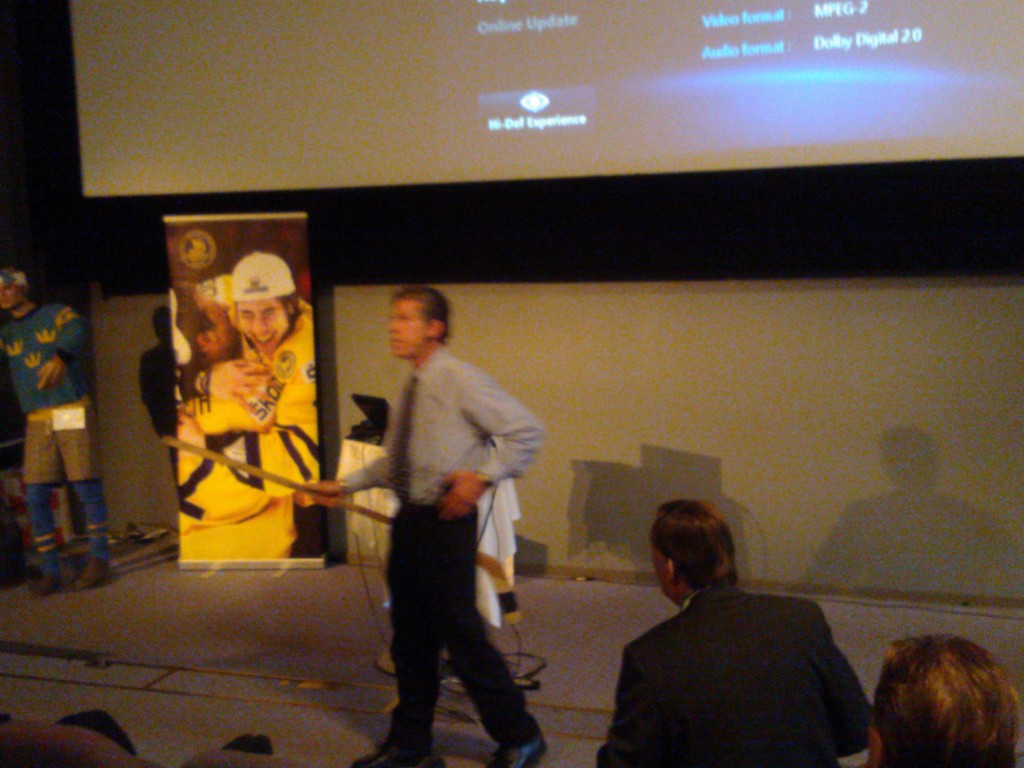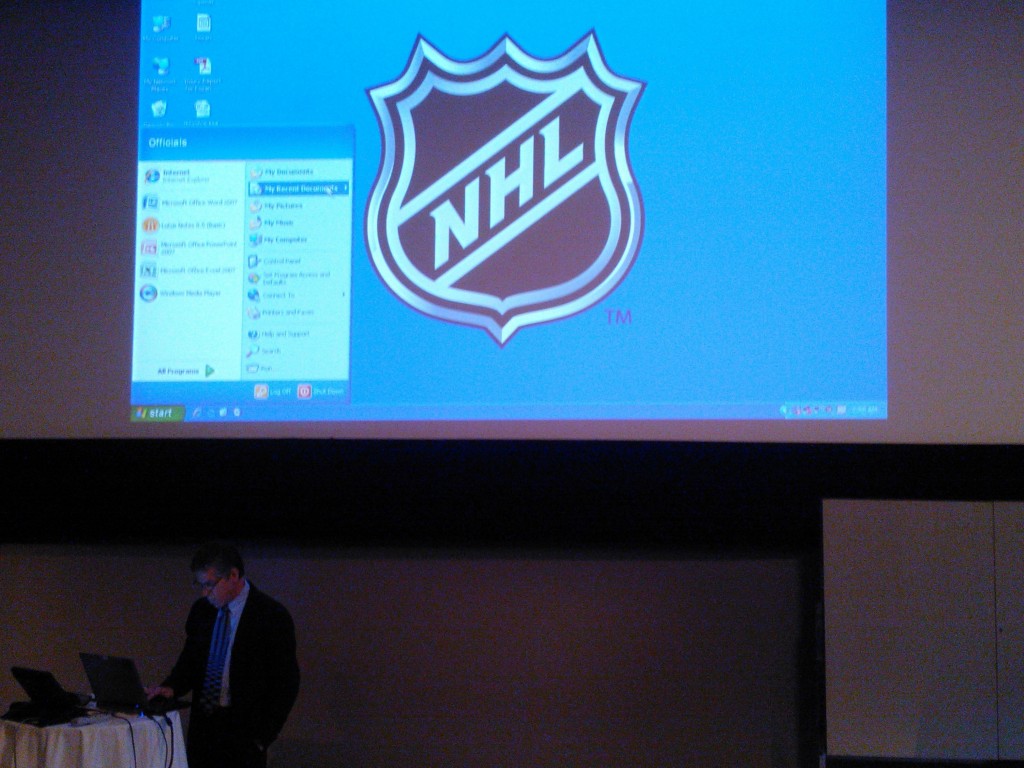During the International Coaching Conference, we had the opportunity to listen to David T. Smith, the NHL officials health and wellness coach.
The NHL officials Health and Wellness program >>
National Hockey League Officials Fitness and Conditioning
- This is a sample program for NHL Officials. As all people are different so are Fitness Programs, the following is used as a guideline with minimum standards for NHL Officials.
- Consult your family doctor before starting any training program
Off season training
- Start by setting some fitness goals for the start of the next season and focus on those throughout your program.
- Incorporate and maintain good eating habits such as frequent small meals rather than a few large ones so your body is burning calories all day. Maintain a balanced diet between carbohydrates, fats and protein.
- Incorporate a stretch and exercise routine before every training session.
Schedule
- 5 days a week / Up to 2 hrs a day
- Strength twice a week
- Aerobics twice a week
- Run, bike, roller blade or other activity once a week
Strength
- Weight training utilizing a variety of programs with changes in repetitions, sets, tempo and exercises.
- Push-ups using varying arm position and use of blocks
- Sit ups, crunches – proper form is very important
- Leg Strength (lunges, squats, step ups)
Aerobics
- Use heart rate monitor to maximize training zones
- Run – 15 min increasing to 60 min.
- Ice sprints – 30 sec increasing to 60 sec.
- Bike – 35 min increasing to 60 min.
- Roller blade or Stairmaster
- Jump rope and plyometric exercises with Resistance Bands to increase foot speed and agility
Cardiovascular Exercise (Run, Bike, Stepper or Glider)
- Warm up (5 min)
- 1 minute increasing intensity intervals for 30 min in your target heart rate zone
- One minute work, one to two minutes rest intervals
- Lower the intensity if you are not recovering to your original Heart Rate after first work/rest interval
- Cool down (5 to 8 minutes)
- You should monitor Heart rate at all times
Maintaining fitness during the season
- 15- 20 minute warm up before games
- Light jog, bike or jump rope to warm up muscles and joints and increase Heart Rate
- Stretch and flexibility as a daily wellness program
- Aerobic Exercise 2 or 3 times a week on non game days
- Strength and Resistance exercises are done as travel and game schedule allows. Maintaining a base throughout the season will allow an easier transition into the off season training program and helps promote an overall healthy and productive lifestyle.



